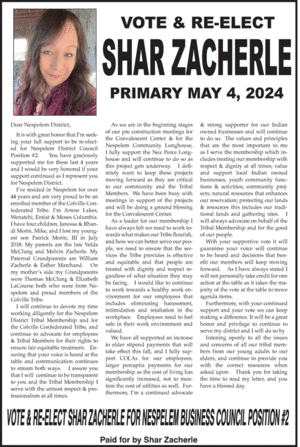December brings cold snap and snow
Last updated 1/11/2017 at 10:35am
Let’s start out with a quick look back at 2016 weather, shall we? What really stands out for me in 2016 was the amount of precipitation we received. Our area averages 10.55 inches annually. Well, that changed and will likely change the overall average as well. We had three months with really good precipitation — January: 2.15 inches as measured by my personal weather station (1.90 inches as measured by the official weather station at the Bureau of Reclamation), March: 2.70 inches (1.82) and October: 3.60 inches (3.98).
Our total precipitation for 2016 was 14.89 inches (14.24). Total snow for the winter of 2015-16 was 17.6 inches (19.3). More telling is the wide variance in those numbers. My personal weather station is three-and-a-half miles from the official weather station and 130 feet lower, a short distance, though measurable differences.
The high and low temperatures for 2016 were 102.3˚F (June) and 2.2˚F (December). We broke into triple digits in June (102.3), July (100.7) and August (100.2). We had single-digit readings in January (5.2˚) and in December (2.2˚). Yep, the weather can vary considerably here in the Coulee. Of course, I think you already know that!
I want to say thank you to the folks with the Bureau of Reclamation who, on a daily basis, gather weather data at our only official weather station; it’s greatly appreciated.
Now, let’s look at December 2016. A high temperature of 43.8˚F came on the 4th. A low of 2.2˚F occured on the 16th. Our mean was 24.6˚F, cooler than our average mean of 29.5˚F. The all-time low was -16˚F in 1968. I measured 11.8 inches of snow fall with a Snow Water Equivalency (SWE) of 0.82 inches.
We’ve experienced cold temperatures recently. Cold, like heat, can cause real harm to us humans. Add some wind to the cold equation and we should really be cautious. Here are some things to look out for:
Frostbite: It first affects exposed body tissue where blood circulation may be limited, such as your fingers, toes, nose and ears. Make sure all body parts are well covered. When frostbite starts, feeling is lost in the affected area and your skin will be white or pale looking. If you suspect you are experiencing frostbite, hold the frostbitten area closely against warm skin and get into a warmer environment.
Hypothermia: Low body temperature is the most common winter weather killer. Most people are surprised to learn that hypothermia deaths can occur with temperatures between 30 and 50 degrees. If you or your clothing are wet, then hypothermia becomes even more likely. Warning signs to watch for include uncontrollable shivering, memory loss, disorientation, slurred speech and drowsiness. Seek out medical attention for victims suspected of suffering from hypothermia. If you can’t do that, the victim should be warmed slowly with warm liquids along with dry clothing and blankets.






Reader Comments(0)